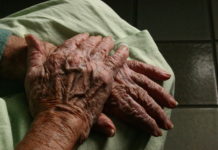 Astronomers from the American Museum of Natural History searched for decades to find the location of two stars that Korean astronomers discovered nearly 600 years ago. The results of their successful search were published in Nature earlier this week.
Astronomers from the American Museum of Natural History searched for decades to find the location of two stars that Korean astronomers discovered nearly 600 years ago. The results of their successful search were published in Nature earlier this week.
The story starts in 1437, when Korean astronomers noted a large explosion and believed it was the birth of a new star. Modern-day astronomers suspected the Korean astronomers had instead observed the death of two stars whose collective energies collided. This phenomenon is called a classical nova. Classical novas are explosions that occur when an older, depleted star, called a white dwarf, pulls hydrogen from an active star, drawing the younger star closer. After the stars collide, the active star becomes a red dwarf which is harder for astronomers to see and emits less heat than the white dwarf. But the two are now close enough to be considered a pair.
The light from the astronomical thermonuclear collision that the Korean astronomers witnessed lasted for two weeks. Astronomers have long speculated on the location of the stars and their current state.
Michael Shara found the pair, but only after studying a pair of similar stars for several decades which were located in the same region. Once he found the right pair, he and his team set about proving that the red dwarf-white dwarf pair were once an active star and a white dwarf. In essence, they are clarifying the life cycle of stars. In the process, they established a new means to measure the distance and age of stars.
Shara explains, “The most important step forward here has been demonstrating you can use this proper motion clock. Getting the date of something is very hard, measuring distances and how old they are are the greatest challenges we have. This is a new tool we’ve inserted into astronomers’ tool chest.”
Here is how the tool works. If researchers are fortunate enough to have a large collection of historical data then they can plot the location of a star in today’s sky against its location 50 years ago, or 70 years ago, or 100 years ago and so on. By measuring the distance across





